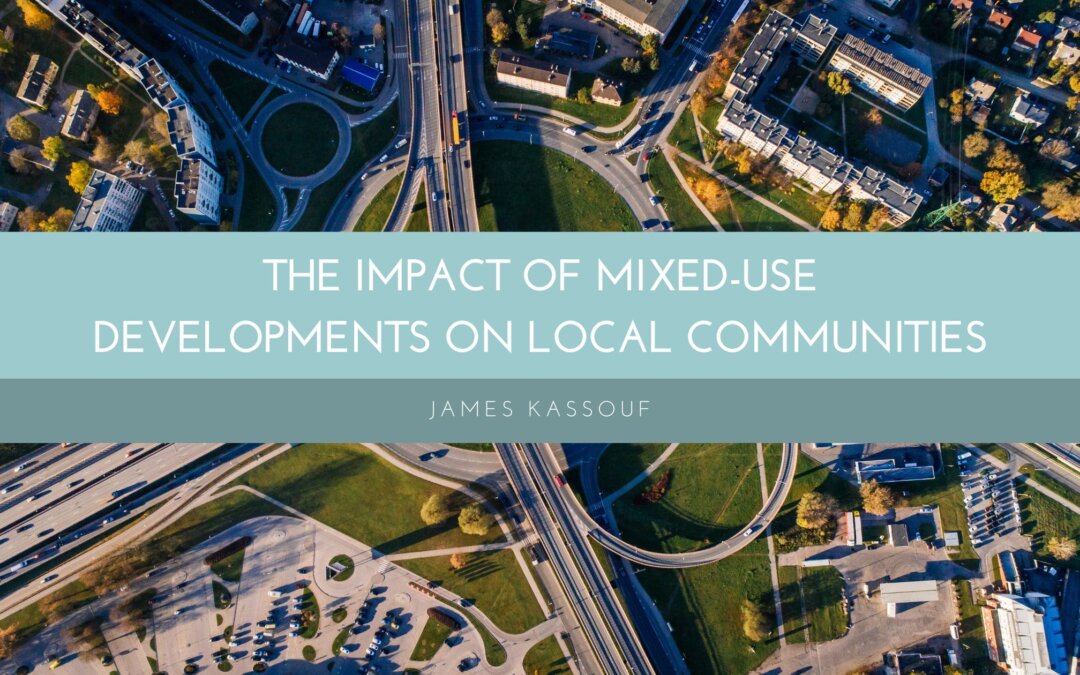Due to their potential for sustainable urban expansion, mixed-use developments, which combine residential, commercial, and sometimes public areas into a single project, have grown in popularity. With a focus on maximizing land use and creating multifunctional communities, they promise a blend of convenience, sustainability, and urban vibrancy. Yet, like any significant shift in urban planning, mixed-use developments bring a range of impacts on local communities. From altering socio-economic dynamics to influencing local infrastructure, these developments reshape how communities live, work, and play.
Historically, city planning often involved separating different types of land uses, leading to distinct zones for residential, commercial, and industrial purposes. This segmentation, driven by the Industrial Revolution’s concerns over health and safety, persisted for decades. However, as urban areas grappled with sprawl, congestion, and a yearning for more integrated communities, mixed-use developments began gaining traction. Favored for their potential to reduce commute times, foster local economies, and build community cohesion, they’re now viewed as a forward-thinking approach to urban living. Yet, their rise is not without implications.
Economic Revitalization
One of the most evident impacts of mixed-use developments is the economic revitalization they can bring to neighborhoods. By integrating retail, office spaces, and residential units, they naturally increase foot traffic, drawing more consumers to local businesses. This can result in higher sales for existing enterprises and attract new ventures, diversifying the local economic landscape.
Additionally, these developments can raise property values. The convenience and desirability of living in such integrated spaces often translate into increased demand for residential units. However, this can be a double-edged sword. While homeowners might appreciate their assets, it can lead to concerns about gentrification, potentially evicting long-term tenants who can no longer afford to live in the area.
Enhanced Mobility and Reduced Traffic
Mixed-use developments inherently promote walkability. With homes, offices, shops, and sometimes even recreational areas in proximity, residents often find less need to use cars for their daily needs. This can significantly reduce local traffic, reducing congestion and its associated environmental impacts.
Furthermore, these developments often prioritize pedestrian-friendly designs, incorporating wide sidewalks, bike lanes, and public transportation access points. As a result, they not only diminish the dependency on personal vehicles but also foster healthier lifestyles by encouraging walking and cycling. Nevertheless, for such developments to effectively alleviate traffic in larger cities, they must be thoughtfully integrated into broader urban transportation networks.
Fostering Community Engagement
The fusion of living and working spaces naturally promotes increased interpersonal interactions. Mixed-use developments, with their blend of public and private spaces, can foster a stronger sense of community. Public squares, parks, and shared amenities become natural gathering points, facilitating social events and casual encounters.
Moreover, residents often experience a heightened sense of ownership and pride in their community, leading to increased civic engagement. This can manifest in community-led initiatives, local volunteering, or a closer-knit neighborhood feeling. However, planners need to ensure inclusivity in design to cater to various age groups, professions, and socio-economic backgrounds to cultivate diverse and cohesive communities.
Mixed-use developments, though modern in their rise, tap into an age-old idea of integrated living. By intertwining various facets of daily life, they not only offer convenience but also promise economic growth, sustainable transportation, and enriched community bonds. However, their success hinges on thoughtful planning and a keen awareness of the socio-economic dynamics.

